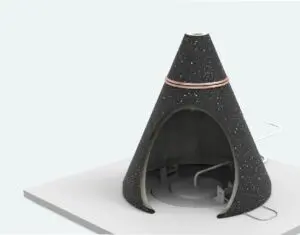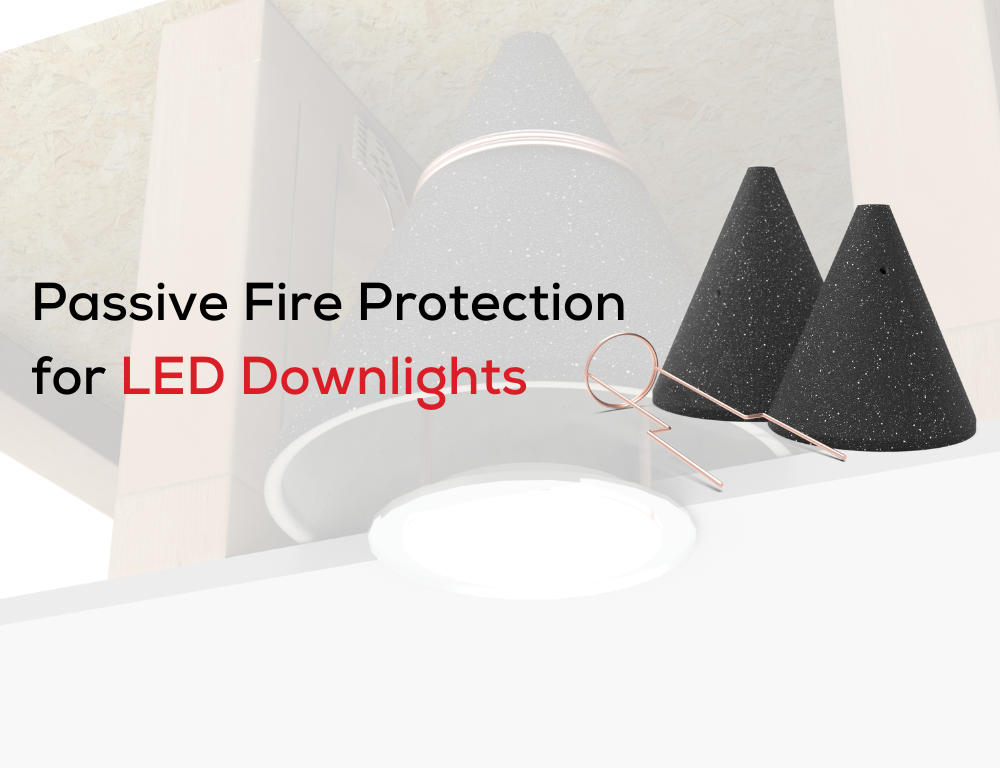Discover the importance of properly fire rating compromised openings, created by LED wafer-styled downlights – and how to effectively resolve this life safety issue.
When it comes to designing a space – whether it’s a luxury hotel lobby or a restaurant renovation – lighting is often one of the essential components in the overall building’s design. It sets the mood, enhances the functionality, highlights the building’s aesthetics, and even impacts energy efficiency.
However, selecting the correct lighting is more than just brightening the room. For example, would you specify a low-lumen light in an operating room? A high-lumen light for a newly renovated fine dining restaurant? No, of course not.
In addition to a fixture’s lumen output, construction professionals need to consider ceiling height, safety requirements, and the building’s aesthetics when selecting their lighting of choice. Therefore, selecting the right lighting fixture isn’t a design decision – it’s a strategic one.
One fixture that’s been checking all the right boxes lately? Low-profile LED downlights.
LED Downlights. Pancake lights. LED Wafer-Styled lights. LED Wafers. Whatever you want to call them. Low-profile LED Downlights have become a popular lighting trend in modern-day construction. But what makes these slim fixtures so popular on job sites across the United States? Let’s break it down.
LED Wafers in Today’s Construction Methods
In today’s construction world, efficiency, flexibility, and aesthetics are key – and that’s exactly why low-profile LED downlights have become a favorite among architects and contractors.
Formulated with an ultra-thin design, LED downlights can fit into tight ceiling spaces where traditional recessed lighting simply won’t work. Whether it’s a hotel relighting renovation or a new construction multi-family complex, their compact design makes them incredibly versatile.
Beyond their size, low-profile LEDs are also known for their installation process. With integrated junction boxes and no need for bulky housings, they’re quick to install – allowing for a reduction in labor time.
Plus, they’re energy-efficient, helping to meet new building codes and reduce long-term energy costs for clients.
Aesthetically, these fixtures offer a clean, modern look that blends seamlessly into ceilings, making them ideal for both residential and commercial spaces. Available in various sizes, color temperatures, and finishes, they can be tailored to suit any design vision.
Furthermore, it’s clear why LED downlights have become the preferred lighting fixtures.
Understanding Recent Building Adoptions & LED Downlights
As the popularity of these fixtures grow, so does their associated life safety hazard. When an LED downlight is fitted into a fire-resistance rated ceiling/floor assembly, the assembly becomes compromised.
How? In the event of a fire outbreak, the heat and flames melt the lighting fixture – opening a prime pathway for heat, smoke, and flames to spread throughout the structure. This reaction jeopardizes the building and everyone within it.
To combat this hazard, building code officials adopted the following building code. The International Building Code states:
“Penetrations of membranes that are part of a horizontal assembly shall comply with Section 714.4.1.1 or 714.4.1.2. Where floor/ceiling assemblies are required to have a fire-resistance rating, recessed fixtures shall be installed such that the required fire resistance will not be reduced.”
This means that any form of recessed lighting – such as low-profile LED downlights – installed in fire-resistance rated applications must include a properly tested and certified form of passive fire protection. Because of this, passive fire protection manufacturers were tasked with formulating a fire-rated solution, specifically for LED downlights.
The Early Stages of PFP for LED Downlights
Traditionally, contractors would build boxes, composed of fire-rated drywall, around each individual LED downlight.
Often, these fire-rated drywall boxes are not built by specifications – raising the problem of inconsistency in the solutions’ quality. To add on to its inconsistency in quality, fire-rated drywall boxes require additional tedious labor – causing labor expenses to raise significantly.
In the effort to reduce labor and material expenses, PFP manufacturers introduced the fire-rated LED downlight. With its ability to be installed easily and merge two solutions into one, fire-rated LED downlights have become a popular choice for contractors and manufacturers.
As it turns out, many of these fire-rated lights have not been properly tested and certified. Without proper testing and certification, these fire-rated lights become a liability in the protection of the building and its occupants.
Consequently, construction professionals have not found a properly tested and certified fire-rated solution, designed for LED wafer openings.
Introducing Tenmat’s Fire Rated Covers for LED Downlights
Until Tenmat’s LED Downlight Fire-Rated Covers. Formulated with state-of-the-art intumescent technology, Tenmat introduced its FF109-200 and FF109-250 LED Downlight Fire-Rated Covers. These covers were designed to expand and seal off unprotected openings, caused by LED wafers, in the event of a fire.
Effortless Installation
With its lightweight, flexible composition, Tenmat’s Fire Rated Light Covers can easily be retrofitted into pre-existing and new construction jobsites. Their adaptable design ensures compatibility with a wide range of LED downlights, including wafer-style fixtures.

Certified Fire Protection
Aside from its seamless integration during installation, Tenmat’s FF109-200 and FF109-250 LED Wafer Covers both have undergone rigorous testing by accredited laboratories and are certified for up to 60 minutes of fire protection. Tenmat’s LED Downlight Covers are proven to be a reliable choice for meeting stringent building code standards in residential, commercial, and multi-family buildings.
Additional Key Benefits
- Flexible intumescent material
- Tool-free installation
- Low-Profile Design
- Retrofitting Capabilities
To Sum It All Up
In today’s fast-paced construction landscape, lighting is no longer just about aesthetics or energy efficiency – it’s about making smart decisions that balance form, function, and most importantly, life safety. Low-profile LED downlights have revolutionized modern lighting design with their sleek appearance, ease of installation, and energy-saving benefits.
However, their integration into fire-rated assemblies introduced a critical safety challenge that couldn’t be ignored. That’s where we, Tenmat, step in.
With the creation of the FF109-200 and FF109-250 Fire-Rated Covers, we have successfully bridged the gap between innovative lighting and passive fire protection. These fire-rated covers offer a tested, certified, a code-compliant solution that ensures LED downlights can be safety installed without compromising the integrity of a fire-resistance rated ceiling assembly.
For architects, engineers, and contractors, this means peace of mind – knowing that their lighting choices not only meet design and performance standards but also uphold the standards of life safety.
Because in construction, every detail matters – and when it comes to life safety, there’s no room for failure.



